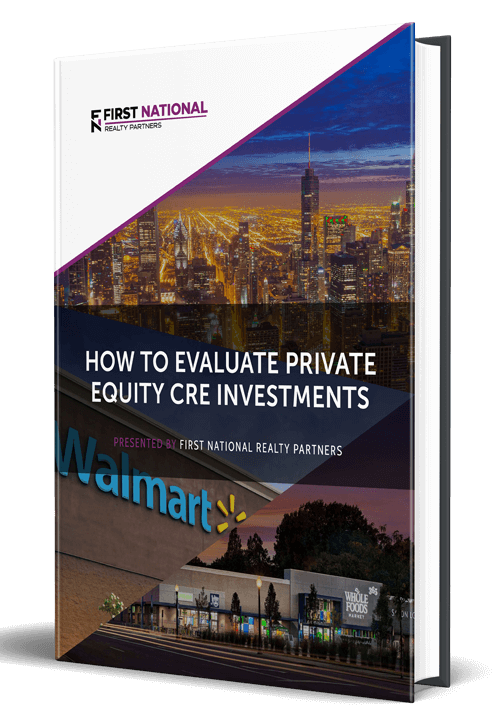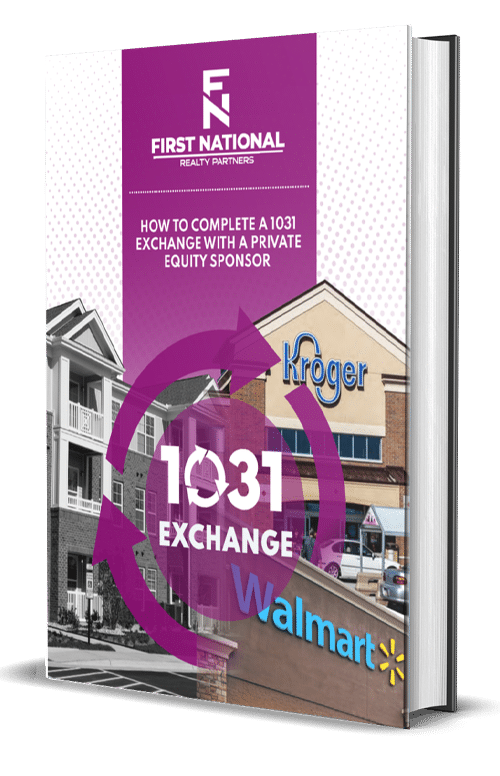It is a simple fact that the components of a commercial real estate property – the roof, HVAC, plumbing, electrical, lumber – wear out over time. Whether through exposure to the elements, normal wear and tear, or a specific event, these components frequently have to be replaced. For some projects, like new paint and carpet, the expense is relatively minor and can be paid from a property’s operating cash flow. In other cases, like replacing a roof, the expense can be significant. In order to prevent major disruption to cash flow, these expenses must be planned for by “reserving” money on a regular basis.
In this article, we are going to discuss capital reserves. We will define what they are, why they are important, and how private equity firms help facilitate the reserve process. By the end, readers will have a thorough understanding of capital reserves and should be able to put this knowledge to use as part of their own real estate pre-purchase due diligence process.
At First National Realty Partners, we always ensure that the reserve accounts for our properties are adequately funded. Doing so lowers the risk profile of the transaction and provides more realistic return scenarios for our investors. To learn more about our current investment opportunities, click here.
Capital Reserves Explained
Capital reserves are funds that are set aside from normal operations to pay for future capital expenditures (capex) and/or capital improvements. The cost of the reserves is shown as a line item on a property’s income statement, but it may not necessarily be spent in the same year that it is expensed. Often, reserve funds are placed into an account where they sit until they need to be used.
It should be noted that capital expenditures are different from the normal day to day maintenance performed on a property. The key difference is the cost. A regular maintenance program is relatively inexpensive – think landscaping, trash pickup, and replacing air filters. Capital expenditures are expensive items – think replacing a parking lot, hvac system, or roof.
The amount of money that is reserved varies for each property and it is highly dependent upon a number of factors including the property’s age, location, maintenance history, and local building codes.
Why Are Capital Reserves Important?
Capital reserves are important in commercial real estate for a number of reasons, but we want to highlight two in this article:
- They are necessary to ensure that a property is properly maintained. Failure to keep a property up to market standards can result in tenant vacancies, declining rental rates, or higher repair bills. Ultimately, each of these things can have a detrimental impact on the property’s valuation.
- They are also necessary to prevent major disruptions to the property’s cash flow. For example, suppose that a bad storm causes a significant amount of water damage to a property. If the repair cost must be paid from normal net operating income (NOI), the result can be negative cash flow in that same year, which ultimately pushes investment returns lower. Or, if the repair bill is high enough, cash flow can be negative and the investment manager may have to issue a capital call to help fund the repairs. Neither of these scenarios is a positive one and the risk of them happening can be reduced by properly funding the replacement reserve account.
To illustrate these points, an example is helpful.
Capital Reserve Example
Suppose that a real estate investor owns a commercial retail property. In the first year of operations, the income statement looks like this:
| Gross Potential Income | $1,000,000 |
| Vacancy & Credit Loss | -$50,000 |
| Effective Rental Income | $950,000 |
| Other Income | $15,000 |
| Gross Operating Income | $965,000 |
| Property Taxes | $168,000 |
| Insurance | $124,000 |
| Maintenance | $75,000 |
| Property Management | $92,000 |
| Total Expenses | $459,000 |
| Net Operating Income | $506,000 |
In this scenario, the property produces $506,000 in net operating income. Now, suppose that the roof has come to the end of its useful life and a new one costs $750,000. Clearly, this is more than the property produced in NOI so there are two scenarios in which the replacement could be funded.
First, the owner could try to pay for the expense from NOI, but the cost would eat more than a year’s worth of it. This would cause negative cash flow and could damage the property’s long term finances. This is not the preferred option.
Or, assume that the owner knew that the roof needed to be replaced and set aside $150,000 per year for five years. In this scenario, there is $750,000 in the reserve account that has been earmarked specifically for replacing the roof. It can be paid without any major disruption to normal operations. This is the desired scenario and it highlights the need for adequate reserves for all commercial properties.
How Do Capital Reserves Impact Net Operating Income?
Let’s take another look at the income statement:
| Gross Potential Income | $1,000,000 |
| Vacancy & Credit Loss | -$50,000 |
| Effective Rental Income | $950,000 |
| Other Income | $15,000 |
| Gross Operating Income | $965,000 |
| Property Taxes | $168,000 |
| Insurance | $124,000 |
| Maintenance | $75,000 |
| Property Management | $92,000 |
| Capital Reserves | $150,000 |
| Total Expenses | $609,000 |
| Net Operating Income | $356,000 |
If the property owner was to set aside $150,000 each year, there is some question about where that line item should appear on the income statement. If it were to be grouped into the other operating expenses, it would reduce NOI. Since commercial investment properties are valued based on the amount of NOI they produce, including reserves above NOI could artificially skew the property’s value lower. For this reason, it is often listed below NOI in a proforma or operating statement. This way real estate investors can identify which are true, ongoing operating costs for the property versus which is just money set aside for future expenses.
How A Private Equity Firm Helps Investors With Capital Reserves
Trying to figure out the proper reserve amount in a real estate investment is both art and science. It is highly dependent upon the property type, age of the building components, planned renovations, and location. But, it is also a product of experience and expertise in how much things cost. This is where a private equity firm can help.
Firms like ours have a tremendous amount of experience owning and operating commercial real estate assets. As a result, we understand the importance of allocating funds to the property’s reserve fund in two ways:
- We can leverage our prior operational experience to pursue reserve amount best practices. In addition, we can leverage existing relationships with vendors and contractors to accomplish work at a reasonable price.
- Many private equity firms – us included – invest their own money in each deal. As a result, it is in their best interest to ensure there are adequate reserves.
These reasons highlight one of the many benefits of working with a private equity firm to facilitate a commercial real estate investment.
Summary of Commercial Real Estate Capital Reserves
In real estate investing, capital reserves are funds that are set aside from normal operating income to pay for high cost capital expenditures in the future. Examples of these high ticket items include things like major renovations or a new roof.
As part of the property management process, it is important to fund the capital reserve account because doing so can prevent major disruptions to the property’s operating income. Failure to do so can have a negative impact on things like rental income and property value.
Through experience and expertise, working with a private equity firm can help to ensure that a property’s reserve accounts are adequately funded.
Interested In Learning More?
First National Realty Partners is one of the country’s leading private equity commercial real estate investment firms. With an intentional focus on finding world-class, multi-tenanted assets well below intrinsic value, we seek to create superior long-term, risk-adjusted returns for our investors while creating strong economic assets for the communities we invest in.
If you are an Accredited Real Estate Investor and would like to learn more about our investment opportunities, contact us at (800) 605-4966 or info@fnrpusa.com for more information.






